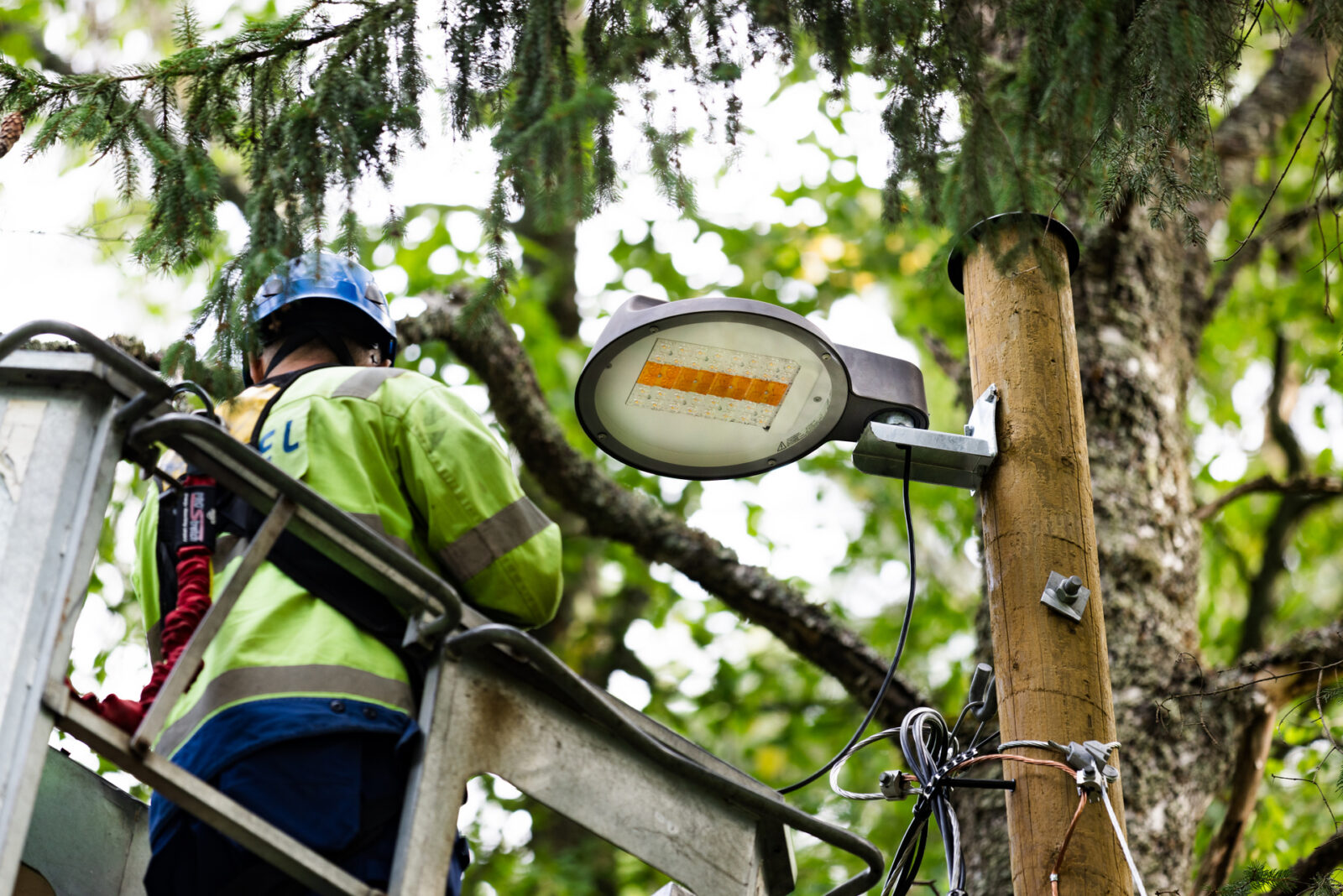Moths flying around a street light is a common sight during summer nights. However, very few realize that this phenomenon is harmful for the pollinators and our entire ecosystem.
Insects think the artificial light is light from the moon and stars, which confuses their sense of direction. Pollinators flying around a light are distracted from their nocturnal pollination and are tiring themselves out.
Researchers have observed that 62% less pollinators visited plants in an artificially lit area in comparison to plants in a dark area. Daytime pollinators cannot compensate for the pollination deficit that occurs at night.
Filtering out the blue light
As pollinators are especially drawn towards light in the blue spectrum, the city of Lahti is piloting new, pollinator-friendly street lights, which automatically filter out the blue spectrum during night time. When the color spectrum of the light is warm, pollinators aren’t as likely to mistake the street lights for the night sky and can concentrate on their important work.
In this pilot phase, Lahti has changed a total of 12 lights along a 500 meter long footpath located in the Ritamäki nature reserve.
– We chose an area with lots of pollinators so that the lights do the most good. If the feedback from the pilot is positive, we’ll update the lighting in other areas as well, says Veera Hämäläinen, Communications Director at the city of Lahti.
The pollinator-friendly street lights are a part of Lahti’s ‘Without pollinators we cannot survive’ campaign. It started in June by giving out 10 000 seed packets and 100 ‘I pollinate here’ yard signs to citizens. The signs ran out in half an hour.
The city of Lahti also installed five designer apartments for pollinators to Mukkula manor park. The apartments were designed by internationally awarded interior architect Tapio Anttila.
Read more: Without pollinators we cannot survive